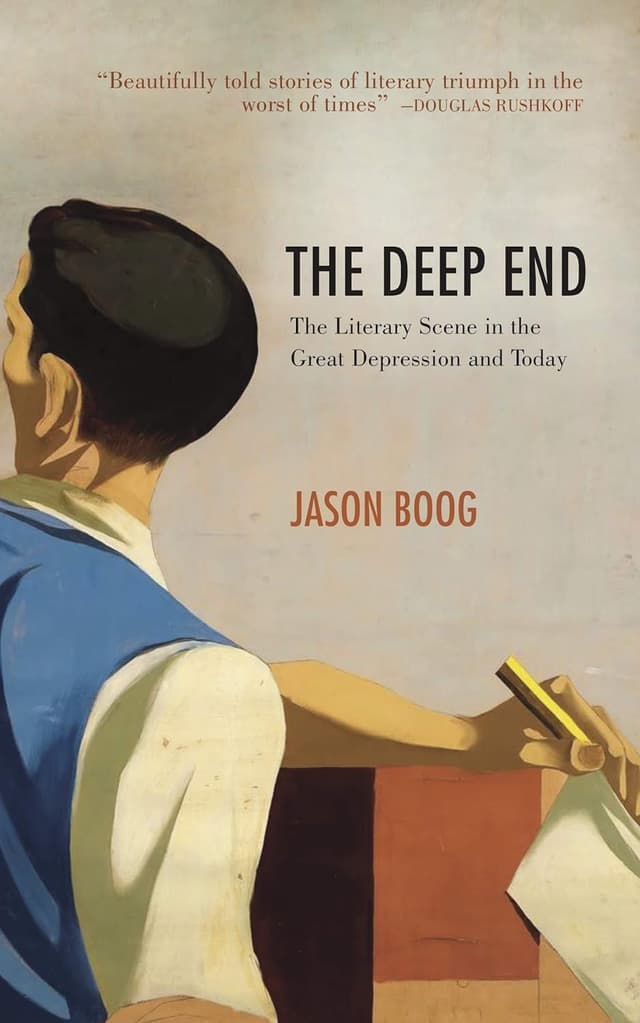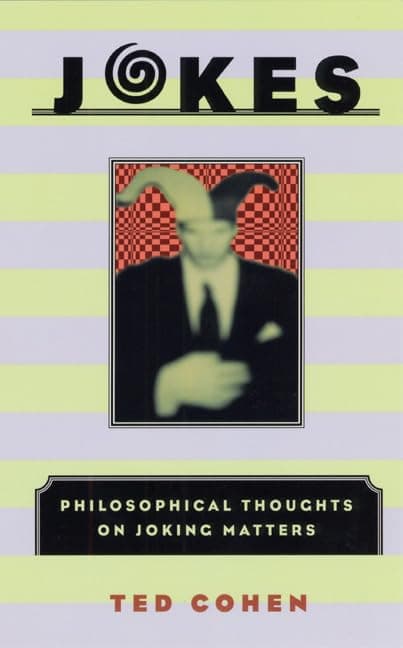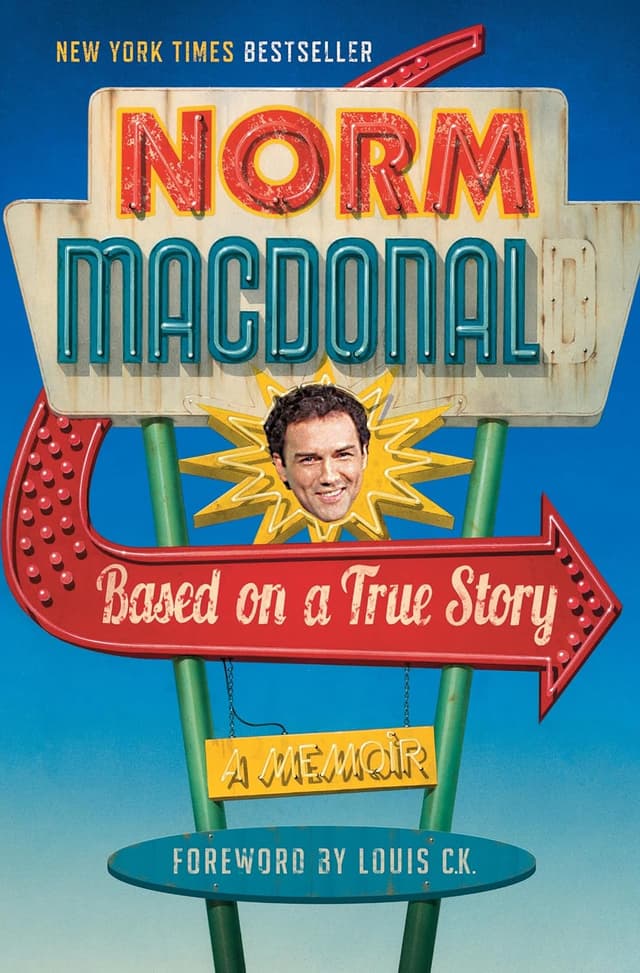Jason Boog | September 16, 2021
The Shaggy Dog Edition
On Norm Macdonald, storytelling, and delivery
Recommended Products

A book by Jason Boog that explores the literary scene during the Great Depression and compares it to the modern day.

A 1999 book by Ted Cohen that discusses the philosophical underpinnings of jokes, including the Shaggy dog story.

A memoir by Norm Macdonald where he distorts his life story, including a retelling of his famous 'Moth Story'.
Jason Boog (JB) leads editorial at Fable, a social reading platform for book clubs. He is also the author of The Deep End: The Literary Scene in the Great Depression and Today and contributor of The New Masses Edition and The Roblox Edition for WITI.
Jason here. We lost Norm Macdonald this week, the undisputed master of the comedy genre somewhat officially known as the Shaggy dog story, or a “joke” that breaks all the traditional storytelling rules, twisting and extending a stupid, absurd, or obscene concept far beyond its expected limits. While he never categorized his own work, Macdonald’s bit that has come to be known as the “Moth Story” is one of the best Shaggy dog stories ever told, rewatched over a million times since his passing. Without spoiling a single precious sentence of this joke, here’s the set-up: Macdonald tells Conan O’Brien a meandering and surreal four-minute-long fable that he claims somebody told him earlier that day. If anybody else had told this particular story, it would have driven the late-night audience insane with boredom, but through Macdonald’s perfectly disheveled delivery, the story levitates like a superconductor, floating between stand-up comedy and literature.
By the most traditional definition, a Shaggy dog story shouldn’t even have a punchline. It’s just one storyteller enticing listeners with the promise of meaning that never arrives. These jokes are endurance tests, every time you tell one, you tightrope across an abyss: how many inconsequential details should you add to the narrative? How long can you tell the story before the listener storms out of the room? What’s the correct expression to wear as you “end” the story? Nobody could land these jokes better than Macdonald. Take some time to listen to a few of his Shaggy dog masterpieces this week, like his take on country life, his memories of a schoolmate who labored under great expectations, or his bleakest and most obscene Shaggy dog story, “Dirty Johnny.”
Why is this interesting?
Macdonald carried an old art form into the 21st Century with his rambling routines. British etymologist Michael Quinion traced the first printed reference to a Shaggy dog story back to the 1930s, as jokes about people searching for shaggy dogs with absurd results began to surface in popular culture. “We may reasonably argue that the tale is much older than the name and indeed may have been a feature of campfire or fireside tales since roughly the year dot,” added Quinion, speculating that there is something old and deeply human about the storytelling sub-genre. Ted Cohen wrote about the philosophical underpinnings of the Shaggy dog story in his 1999 book, “Jokes: Philosophical Thoughts on Joking Matters,” calling them “joke-like concoctions” that wield powers of anti-storytelling:
If this is a joke, then it is a joke in the way in which certain works of Dada and Neo-Dada are art … John Cage's “Four minutes, 33 seconds” is given to an audience expecting to hear audible musical events, and the audience hears no traditional music. The story about the shaggy dog is given to people listening to the narrative and expecting it to culminate in a punch line of a certain kind.
Macdonald used the Shaggy dog story format to break out of the dull repetition of late-night television where guests are expected to deliver charming patter and airy anecdotes on command. These shows deliver an anesthetized version of real life, a comedian’s work chopped into shiny and digestible content. We can never replace Macdonald, but we’ve never needed this art form more than we do right now. The Internet overflows with short-form content, and we are losing our ability to focus on a piece of text or video for more than 30 seconds. Shaggy dog artists like Macdonald calculate every single gesture and twist of these seemingly aimless stories, but the jokes give us a glimpse of the meaninglessness and existential menace that talk-show gags and social media scrolls band-aid for viewers during the wee hours of the night.
Like the shambly hero of Macdonald’s best jokes, we encounter a bewildering set of experiences as we stumble from one end of our lives to the other. Novelists, newscasters, and TV hosts offer a bit of wisdom or morals to help make sense of it all, but real life is a lot more like a Shaggy dog story. All our analysis and narrative sense is a just flimsy bridge built across a void. Norm Macdonald reminded us that we are all wandering through an ultimately befuddling world, and we can be miserable about that, or we can laugh.
Macdonald wrote a one-of-a-kind memoir called “Based on a True Story: A Memoir,” distorting his life story through a funhouse mirror, writing tall tales that mixed equal parts Mark Twain and Hunter S. Thompson. Midway through this novel-memoir, he even reframes his “Moth Story” in a new context, re-wrapping his beloved Shaggy story inside a completely bonkers and imaginary recollection about a visit to a children’s ward at the hospital. The whole book is a Matryoshka doll—as you open one Shaggy dog story, you discover more Shaggy dog stories nested inside the original. At one point, Macdonald discovers a then-erroneous edit to his own Wikipedia page that said he had died. It is spooky to read that passage this week, an eerie dispatch from a comedian who managed, through his memoir and through his career, to turn his life into a magnificent Shaggy dog story that we will spend generations unpacking:
So now I start to read this thing on the computer again, only this time I read it the way I imagine a stranger will in a few years or a few decades. When it’s true. In the future, when I was Norm Macdonald. So this is my life, then, these words on this screen? Well, it doesn’t add up to much, just a series of facts, and I suppose that’s what a man’s life is, after all, but it’s more than that too. I mean, it has to be, doesn’t it? And so I decide I will write an account of my life my own self. My side of the story. (JB)
Matryoshka doll of the Day:
Unsplash photographer Didssph took this photo of a fully unpacked Matryoshka doll, a ceramic version of the Eastern European dolls-inside-of dolls, the most meta of all toys. (JB)
Quick Links:
I wrote about GPT-3 for a WITI over the summer, but Gwern’s amazing essay about prompt engineering has given me lots of new things to think about and improved my interactions with this super-powerful language model. (JB)
The excellent Backlisted podcast always recommends great books, but the episode about Steve Aylett's Heart of the Original has continued to inspire me long after I listened. (JB)
I’m not the only person reading this book, but I’ve been telling everybody to try The Plot by Jean Hanff Korelitz. Avoid reviews and just jump in: it’s a thriller-type book about a struggling creative writing professor who meets a brash student with a blockbuster idea. (JB)
Thanks for reading,
Noah (NRB) & Colin (CJN) & Jason (JB)
—
Why is this interesting? is a daily email from Noah Brier & Colin Nagy (and friends!) about interesting things. If you’ve enjoyed this edition, please consider forwarding it to a friend. If you’re reading it for the first time, consider subscribing (it’s free!).
